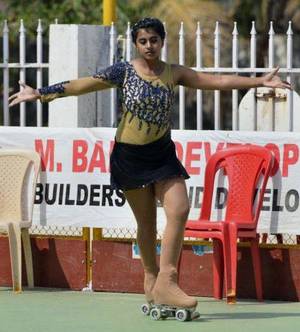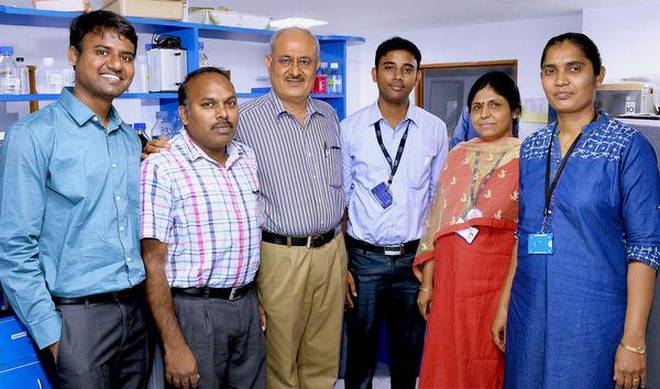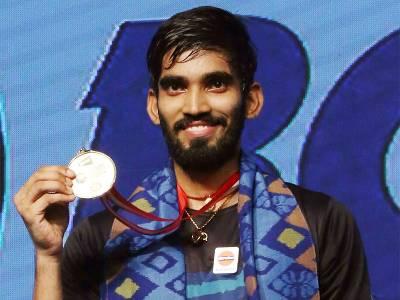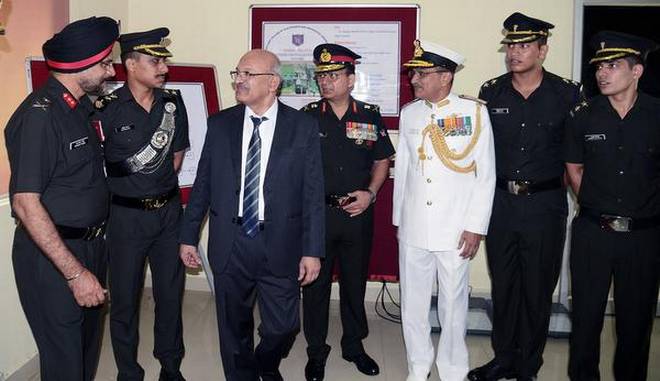Monthly Archives: June 2017
22nd
21st
20th
Kairavi waltzes her way to World Roller Games

First girl in Telangana to compete at the global level
Kairavi Falguni Thakkar has made it to the World Roller Games to be held at Nanjing in China from August 25 to September 10. The first year BA student of St. Francis College, Begumpet, would be the first girl from Telangana to compete at such a global level and in the junior (under 19 years) solo dance event.
Currently in the Indian camp at the National College indoor stadium at Tiruchi in Tamil Nadu, she braved ups and downs before choosing to climb rather than sink in despair. “My lecturer-mother Falguni Thakkar is my backbone from whom I’ve inherited the ultimate attitude — never give up,” she told The Hindu.
The 18-year-old is quick to point out the other pillars of support — siblings Anup Kumar Yama (an Arjuna awardee) and Amar Nag Yama. “I idolise my coaches, who have inspired me to scale new heights,” says Kairavi.
Stepping into a rink for the first time when just eight years old, she has evolved into an artistic roller skater. Ask her why not tennis or badminton and Kairavi turns eloquent spokesperson for her passion.
“A skater should ideally have the strength of a tennis player, the balance of a tight rope walker, the endurance of a marathon runner, the precision of a badminton player, the agility of a gymnast, the cool nerve of a golfer, the grace and poise of a dancer,” she reckons.
“It involves dance, jumps and spins as in ice skating, but on roller skates,” she stresses. Yet in the not too distant past, the gritty lass was skating on thin ice. With a dash of daring, she jetted off to Portugal in March for training with Filipe Sereno, just before her 12th board exams!
Kairavi’s cupboard is crammed with medals from district, State and national-level competitions in freestyle, figure and solo dance skating. Going by her confidence level, her first international medal could well come from China.
source: http://www.thehindu.com / The Hindu / Home> News> States> Telangana / by A. Jospeh Anthony / Hyderabad – June 18th, 2017
Hyderabad team grows miniature eyes using stem cells

Lab-grown corneal epithelial cells can potentially be used for restoring vision
Researchers at the Hyderabad-based LV Prasad Eye Institute (LVPEI) have successfully grown miniature eye-like organs that closely resemble the developing eyes of an early-stage embryo. The miniature eyes were produced using induced pluripotent stem (iPS) cells. The iPS cells are produced by genetically manipulating human skin cells to produce embryonic-like stem cells that are capable of forming any cell types of the body.
Small portions of the corneal tissue were separated from the miniature eyes and used for growing corneal epithelial cell sheets in the lab. Such tissue-engineered cell sheets can potentially be used for restoring vision in patients whose limbus region of the cornea is damaged in both the eyes. The limbus region of the cornea contains stem cells, and chemical or thermal damage to this region affects corneal regeneration and results in vision loss.
Stem cells present in the limbus region of a healthy eye have been used for restoring vision when only one eye is damaged. But when the damage is present in both eyes, the only way to restore vision is by using the healthy limbus taken from a related or unrelated donor. Patients have to be on immunosuppressants lifelong when limbus is transplanted from donors. However, immunosuppressants are not required when corneal cells grown using the patient’s own skin cells are used for restoring vision.
Growing eye-like organs
A team led by Dr. Indumathi Mariappan was able to grow complex eye-like organs in the lab by allowing the cells to organise themselves in three dimensions. The miniature eye closely resembles the developing eyes of an early-stage embryo. The eye-like structure consists of miniature forms of retina, cornea and eyelid. The results were published in the journal Development.
“It took about four–six weeks for the eye-like structure to form from iPS cells. We then removed the cornea-like structure for further study,” says Dr. Mariappan from the Centre for Ocular Regeneration at the LV Prasad Eye Institute and the corresponding author of the paper.
The cornea has three layers — epithelium (outer layer), stroma (middle layer) and endothelium (inner layer). “All the three layers of the cornea were observed, indicating that the mini-cornea had developed correctly,” she says. “The cornea initially forms as a simple bubble-like structure which is very delicate to handle. It later matures to form a thick cornea-like structure over a period of 10-15 weeks.”
The corneal epithelial sheets that would be used for treating the damaged eyes were then grown in the lab using small pieces of the mini-cornea containing the epithelium and a portion of the stroma. The stem cells present in the tissue pieces proliferated and gave rise to a uniform sheet of epithelium of about 2.5 cm by 2.5 cm size.
Animal trials
The team is currently focusing on testing the usefulness of the corneal cells grown from iPS cells in restoring vision in animal models (rats). “We will soon be starting the animal experiments,” she says. Trials on human subjects will be considered if the animal experiments turn out to be safe and effective in restoring vision.
In treatment
In parallel, the researchers are also working on producing mini-retinal tissue and actively exploring iPS cell-derived retinal tissues for treating several retinal diseases such as age-related macular degeneration (AMD), retinitis pigmentosa and certain forms of congenital blindness seen in children and young adults.
Already, retinal cells grown using human embryonic stem cells and iPS cells are being tested in clincal trials in a few countries to treat retinal diseases.
source: http://www.thehindu.com / Home> Sci-Tech> Health / by R. Prasad / June 17th, 2017
Srikanth beats Sakai to win Indonesia Open Super Series Premier title

___________________________________________________________________
Highlights :
1. Srikanth looked in the zone as he easily downed world no 47 Sakai in straight games 21-11, 21-19
2. The Indonesian Open is Srikanth’s second Super Series Premier title after he won the 2014 China Open Super Series Premier
3. Srikanth had finished runner-up at Singapore Open after losing to compatriot B Sai Praneeth in the summit clash last month
____________________________________________________________________
Jakarta :
Indian shuttler Kidambi Srikanth clinched his third Super Series title, lifting the Indonesia Open men’s singles trophy with a straight-game victory over Japanese qualifier Kazumasa Sakai in the final on Sunday.
World No.22 Srikanth, who had reached the finals at Singapore Open in April, outclassed Sakai, ranked 47th, 21-11 21-19 in just 37 minutes to take home a cheque of $75,000.
“He was playing well, especially in the second game and I think for me coming back from 6-11 down and make it 13-13 was the turning point,” said Srikanth, who had clinched the 2014 China Super Series Premier and 2015 India Super Series.
“My coach will have a special place in my heart as after he came, I reached the finals at Singapore and to win this tournament, which is considered the biggest tournament. I want to thank all the fans who have been rooting for me all this week,” he added.
Srikanth played a patient game and didn’t allow his opponent to engage in any fast-paced rally. He dictated the pace with his precise angled returns and unleashed his smashes at perfect intervals to down his rival.
Playing in tricky conditions, Srikanth took time to gauge the conditions as his initial returns went wide and out.
But his rival also suffered because of similar unforced errors and the Indian led 6-4 early on. He consolidated his lead to reach 11-8 at the break.
After the interval, Srikanth continued to dominate the proceedings. His net dribbles were better than Sakai and with Sakai struggling with precision, the Indian zoomed to a 19-11 lead and sealed it with two lucky net chord points.
After the change of sides, Sakai was more aggressive in his approach and produced an improved net game to dominate the rallies.
Soon, the Japanese was leading 7-3 as he entered the break with an 11-6 lead with the help of a backhand return near the net
After the interval, Srikanth’s aggressive game gave him the desired results. He turned the tables and caught up with the Japanese at 13-13 with an on-rushing smash at the net.
The duo moved neck and neck after that till 19-19 before Srikanth produced two fantastic smashes to seal the deal.
source: http://www.timesofindia.indiatimes.com / The Times of India / News> Sports> Badminton / PTI / June 18th, 2017
MCEME graduates make cell-controlled lighting system

If it were left to young engineers of Military College of Electronics and Mechanical Engineering, Country’s street lights would be auto-operated. The 91st graduating batch of the college produced a GSM connected, cell phone-operated lighting system which can be turned on and off based on requirement.
The power-saving circuit built by Noushad M.E., Ashish Kaushik, Sumit Dhanda and Akhil A.R. cost ₹ 57,200. It could be used for both civilian and defence purposes, the innovators said. The model also allows operators to operate just one or two light bulbs in a whole series. “If the operator thinks that just a few light bulbs are enough for lighting any area, they could turn off the rest by texting the details into the circuit,” said Mr. Akhil A.R. The model displayed in MCEME contained a circuit connected to six bulbs.
“The model also detects faulty operations if there are any. If a light bulb goes off, it will alert the operator,” M.E. Noushad told The Hindu. Mr. Sumit Dhanda said the project will be useful in huge military campuses which use power. “If the model is adopted by city development corporations it could cut power costs by one third,” said Mr. Dhanda. The MCEME awarded its annual best project prize to the four officers at its Convocation Ceremony on Thursday.
The MCEME passing out batch had also come up with a simple solution – a microcontroller-based automatic ventilation system – for car interiors which get heated when parked in the open. The ventilator contains a small control unit and a solar-powered exhaust fan which runs on external battery.
The microcontroller which is programmed to check the status of temperature and humidity inside the car every two seconds, triggers the exhaust fan when needed, to clear out the heat,” said an officer Vipin Jaiswal and the team leader. Other members of the project were Mukesh Thakur, M. Hariharan and M.S. Shakhavat.
Military boost
The college displayed a solar rechargeable backpack for troopers among its exhibits. The backpack with solar panels can be used as a tracking devise when soldiers go for long treks in the field, graduates said. “In any dire circumstance if the user presses a button on the backpack it sends a Save Our Souls message to control base. It will help officers to track those who are in danger during combat situation,” said Pankaj Saini who was the syndicate leader of the team which came up with the model. The other members in the team were Harmeet Singh, Sachin Yadav and Sagar.
Speaking at the convocation, A. Venugopal Reddy, Vice Chancellor of Jawaharlal Nehru Technological University asked the graduates to pay attention to new developments in cyber security and be abreast of technological innovations. “Your convocation is not like others’ passing out functions. You leave this institution to serve the motherland,” Mr. Reddy said.
source: http://www.thehindu.com / The Hindu / Home> News> Cities> Hyderabad / by Nikhila Henry / Hyderabad – June 16th, 2017